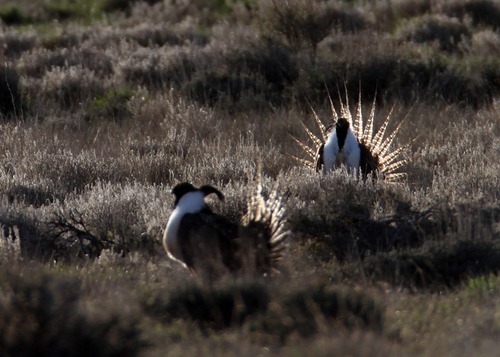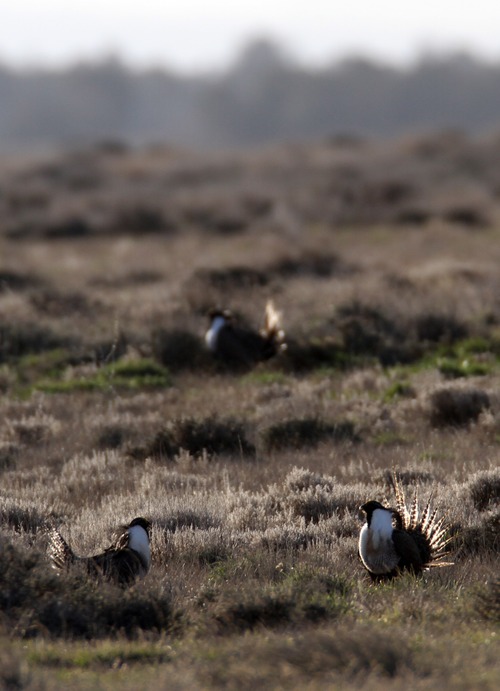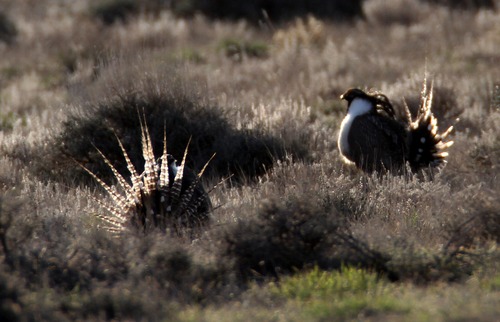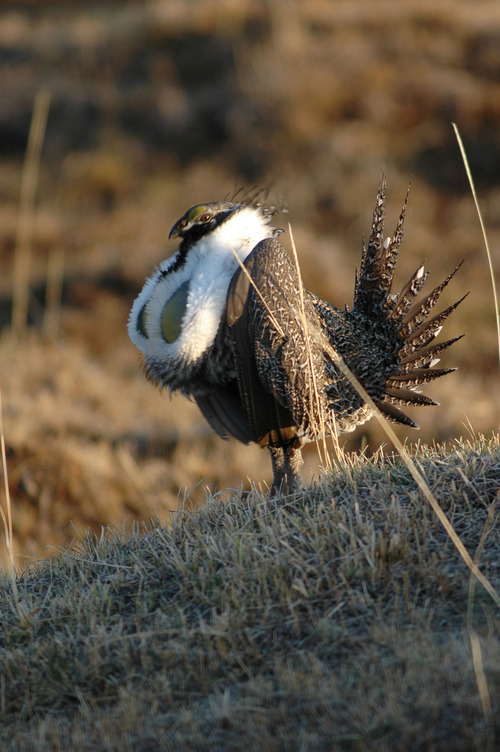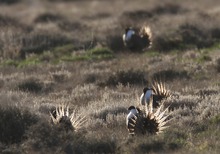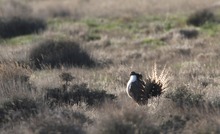This is an archived article that was published on sltrib.com in 2013, and information in the article may be outdated. It is provided only for personal research purposes and may not be reprinted.
Bruce Adams and other private landowners in San Juan County have conserved and improved habitat for Gunnison sage grouse by planting forbs, creating wet meadows, putting conservation easements on their land, and even selling out to a land conservancy.
But these measures were not enough to keep federal wildlife officials from proposing last week to list the rare bird for protection under the Endangered Species Act (ESA).
But then, the ultimate survival of this species is not really in Utah's hands.
Residential development in Colorado ski country has so eroded and fragmented habitat for the Gunnison sage grouse — which has a much smaller range and population base than its close cousin, the greater sage grouse, to the north — that wildlife managers now believe federal protection is necessary.
The proposed listing includes designating 1.7 million acres as critical habitat, nearly all of it in southwest Colorado. Grouse currently occupy 70,000 acres north and east of Monticello, the Utah town in the shadow of the Abajo Mountains. Nearly all the Utah land is private agricultural land, according to Adams, chairman of the San Juan County Commission.
While it was unclear whether the ESA listing would severely restrict how this land is used, such an action would cede management authority from the states to the federal government.
"We think it will affect farming, ranching, wind power and mineral development," said Adams, who is incensed none of the hearings on the listing proposal will occur in Utah. "We think the Utah Division of Wildlife Resources is the appropriate agency to manage those birds."
At 5 pounds, the Gunnison sage grouse is puny compared with the two- to three-times larger and more-common greater sage grouse, which is facing its own conservation struggles. But that bird's numbers are in the tens of thousands spread across Utah, Wyoming and nine other Western states. By implementing comprehensive conservation plans, state officials are working to head off ESA listing for greater sage grouse, which would have far-reaching economic impacts.
By contrast, the Gunnison grouse is in greater peril and has a much smaller range in Utah. Less than 5,000 of the birds remain in Colorado and Utah, occupying only 7 percent of the species' historical range in seven distinct populations. Utah's Gunnison sage-grouse population has declined from between 583 and 1,050 in recent years to only 103 individual birds, according to federal wildlife officials.
"It's hard to save a species once they've gone down to such low numbers. All the science suggests if action isn't taken to fix these problems, this species can go extinct," said Megan Mueller, a Denver-based conservation biologist with Rocky Mountain Wild. She said listing would free up federal grants that could fund restoration efforts and conservation easements.
Only three months ago, The Nature Conservancy (TNC)purchased 1,080 acres northeast of Monticello to be managed as grouse habitat in partnership with DWR. This effort includes water diversions and seeding 180 acres with sagebrush, according to Sue Bellagamba, TNC's Canyonlands regional director. Conservation easements have been placed on two other pieces of core habitat, totalling 2,560 acres.
"For the Monticello population we are having issues with chick survival," Bellagamba said. "There's a lot of sagebrush out there, but not a lot of the high-quality habitat with all the components chicks need, like forbs and insects."
The proposed listing comes after more than a dozen years of study, petitions and litigation brought by WildEarth Guardians, Mueller's group and other environmental groups. Mark Salvo, who directs WildEarth's Sagebrush Sea Campaign, contends U.S. Fish and Wildlife Service was poised to list the grouse back in 2006, but the Bush administration derailed that action.
The proposal opens a 60-day comment period that expires March 12. The Fish and Wildlife Service will consider additional scientific information and make a final determination by September whether to list the bird.
Make a comment
You can submit comments on the proposed listing of the Gunnison sage grouse as endangered:
Electronically • Go to regulations.gov and in the keyword box, enter Docket No. FWS-R6-ES-2012-0108 in the search field and click on search. In the next screen, click on "Comment Now!"
By hard copy • Mail your comments to Public Comments Processing, Attn: FWS-R6-ES-2012-0108; Division of Policy and Directives Management; U.S. Fish and Wildlife Service; 4401 N. Fairfax Drive, MS 2042-PDM; Arlington, VA 22203.


